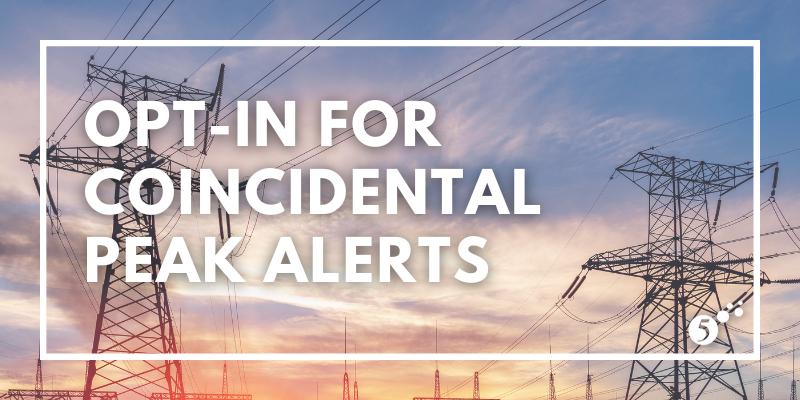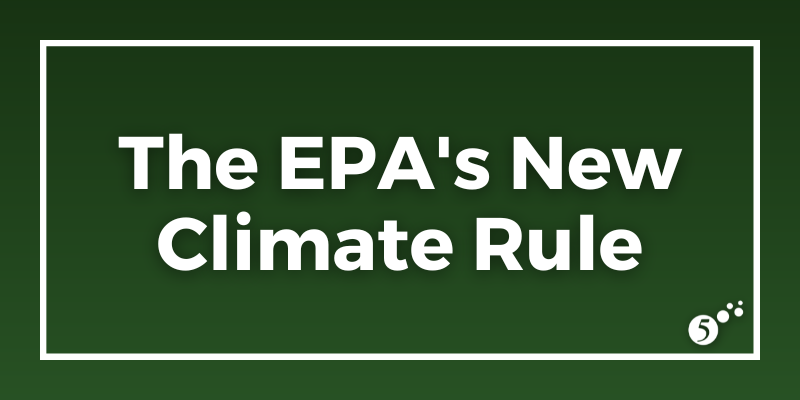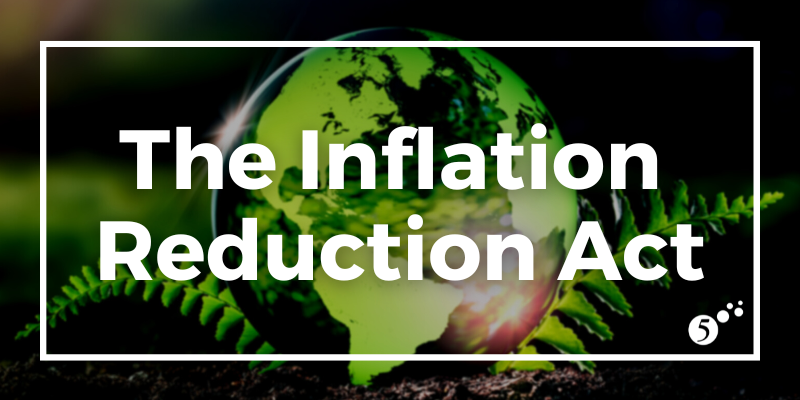4 min read
2025 Coincidental Peak Alerts
By 5 on April 25, 2025
Topics: Markets PJM NYISO ERCOT Demand Response Resiliency
4 min read
Coincidental Peak Alerts 2024
By 5 on May 14, 2024
Topics: Markets PJM NYISO ERCOT Demand Response Resiliency
4 min read
How to Purchase Power in a Bull Market
By 5 on May 14, 2024
One of the most common questions clients ask when purchasing electricity or natural gas is, “How much money am I going to save?” This is a reasonable question and for many years, savings could be realized because energy prices had been trending lower. Figure 1 shows how the NYMEX has settled over the last 31 years. This chart shows that natural gas hit its peak in 2006 in the wake of Hurricane Katrina and Rita where gas prices approached $14/Dth.
Topics: Markets Procurement Education Resiliency
4 min read
Mid-Summer Market Update: ERCOT, PJM & NYISO
By 5 on July 17, 2023
Given that we are halfway through July, we thought it would be appropriate to provide an update on how major power markets have performed as they relate to each ISO’s coincident peak demand management program.
So far, both weather and demand on the PJM and NYISO grids have been mild compared to recent summers and average summer temperatures. The mean temperature, compared to the average over the last thirty, fourteen, and seven days for the period ending July 13, is shown in Figures 1, 2, and 3 below. These charts show that summer has not really arrived in the middle of the country and that temperatures in the Northeast are only 2º to 3º F above the average.
Topics: Markets PJM NYISO ERCOT Demand Response Resiliency
3 min read
Why Install Electric Vehicle Chargers?
By 5 on July 11, 2023
Why Install Electric Vehicle Chargers?
Topics: Markets Sustainability Renewables Resiliency
4 min read
Coincidental Peak Alerts 2024
By 5 on May 22, 2023
Topics: Markets PJM NYISO ERCOT Demand Response Resiliency
2 min read
The EPA’s New Climate Rule – Déjà vu All Over Again
By 5 on May 18, 2023
On May 11, 2023, the U.S. Environmental Protection Agency (EPA) proposed new rules designed to limit emissions from existing and new coal and natural gas fired power plants. This is the EPA’s third swing at regulating CO2 emissions from power plants. Its first at-bat dates back to 2015 when the Obama Administration’s EPA introduced the Clean Power Plan (CPP). The CPP proposed state-by-state emissions limits. These limits were quickly challenged by numerous states, particularly those with significant amounts of coal-fired generation. While these legal challenges were ongoing, President Trump was elected. Trump scrapped the CPP and introduced the Affordable Clean Energy Rule (ACE), which overrode the CPP and gave the states more power to set their own emission limits. The ACE also faced challenges in the courts.
In June 2022, the Supreme Court issued a ruling in West Virginia v. EPA that significantly limited the ability of the EPA to regulate emissions without a clear mandate from Congress. This ruling assures that the EPA’s new proposed rules, if finalized, are likely to face a lengthy legal battle.
The latest EPA plan sets out aggressive emission reductions and is likely to further accelerate the retirement of fossil fuel generation units. By 2030, the EPA plan requires any coal plant that intends to operate past 2040 to use a carbon capture and storage (CCS) system to eliminate 90% of its CO2 emissions. Large natural gas generation units will also be required to install a CCS that captures 90% of their carbon emissions by 2035 or operate on clean hydrogen by 2038. While there are different restrictions for smaller generation units, the EPA’s rules lean heavily on carbon capture, clean hydrogen and in some instances, use of dual-fueled gas plants with both natural gas and green hydrogen. At the same time, the EPA has acknowledged that CCS and clean hydrogen are not yet in widespread commercial use.
As filed last week, the EPA plan is a proposed rule, and the EPA will need another year or so to issue a final version. Once the final version is issued, states will have another two years to submit plans to comply with the regulations. This timetable will be delayed further by the inevitable legal challenges. West Virginia Senator Shelley Moore Capito and Attorney General Patrick Morrisey have already vowed to lead congressional and legal efforts to kill the rule.
A few things are clear. First, if the rules are adopted, the cost of generating electricity from coal and natural gas plants will increase dramatically. Second, even if the prospects for the EPA’s new rule are limited by various challenges, the proposed rules will cast a shadow over new investments in existing and new fossil fuel generation. Testifying before FERC on May 4, 2023, a bipartisan panel of FERC commissioners (2 Democrats and 2 Republicans) raised their shared concern that the reliability of our electricity grid is challenged by the fact that we continue to see fossil plants retire at a rate far faster than they are replaced by new emission-free generation. Of course, we will continue to monitor this important regulation on behalf of our clients.
Topics: Markets Natural Gas Sustainability Renewables Resiliency
2 min read
Client Spotlight: Shriners Children
By 5 on August 31, 2022
Shriners Children’s began out of the polio epidemic in the late 1910s, with the first hospital opening in Shreveport in 1922. Today, they operate locations throughout the US and in two other countries, all with the same mission: to change and improve the lives of children. In addition to top-of-the-line treatments for children, Shriners also excels in research and physician education. With specialties in orthopedics, burns, craniofacial conditions, and many more, the hospitals follow the vision of the Shriners Fraternity to serve mankind through the care of children.
Topics: Clients Procurement Sustainability Resiliency
4 min read
The Inflation Reduction Act
By 5 on August 31, 2022
The Inflation Reduction Act was signed into law this month. As a budget reconciliation law, it impacts federal income and spending. For 5 and our customers, this law provides increased incentives for on-site renewable projects that support the energy transition.
Topics: Markets Sustainability Education Renewables Resiliency
4 min read
Coincidental Peaks Should Peak Your Interest
By 5 on May 31, 2022
An Overview of Coincidental Peak Costs by ISO
Coincidental Peak (CP) is the measurement of an electricity meter’s actual usage at the time of the regional grid’s highest demand and determining that meter's share of the entire grid’s demand. This concept of identifying a facility’s share of the grid’s total maximum demand is often used in determining the allocation of specific cost components. The specific methodology of how that equation works and which cost components it impacts varies from region to region, and often even utility to utility, and even by customer class, but the overall concept is the same. In this post, we explain how this works in each of the major, deregulated electricity regions, and detail which costs are the most impacted by this variable.










